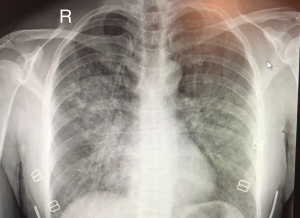
According to medical professionals High-Altitude Pulmonary Edema, (HAPE), is a life threatening medical condition that occurs in a person(s) who travels to higher elevations from a low elevation, and develops a pulmonary edema. Simply put, HAPE is caused by the lack of oxygen in the air due to the higher elevations.
- High altitude 1,500 to 3,500 meters (4,900 to 11,500 ft)
- Very high altitude 3,500 to 5,500 meters (11,500 to 18,000 ft)
- Extreme altitude 5,500 to 8,850 meters (18,000 to 29,000 ft

*There are three levels of altitude sickness:
1. Acute Mountain Sickness (AMS)
2. High-Altitude Cerebral Edema (HACE)
3. High-Altitude Pulmonary Edema (HAPE)
When a person travels from a lower elevation to a higher elevation it takes the body time to adjust to the difference in oxygen levels at that elevation. There have been cases of death due to HAPE, but they are rare. It is important to remember that even a person who resides in a higher elevation who travels to a much lower elevation, and returns to their residence at a higher elevation, can still develop HAPE.
Symptoms of Altitude Sickness:
Mild signs, or AMS, can range from having headaches, fatigue, dizziness, confusion, to nausea or vomiting. Moderate signs, or HACE, are confusion, fatigue, aggression, social withdrawal, drowsiness, convulsions, loss of consciousness and ultimately coma or death. Severe signs, or HAPE, are extreme fatigue, extreme coughing with pink sputum, very difficulty breathing, a rapid or increased heart rate, fever and blue lips, finger or toes.

How to Mitigate HAPE
The first way to prevent any altitude sickness is to take time and allow your body to acclimate to the different elevation. Most professionals say at least one day is necessary to acclimate for persons who are starting from lower elevations. However, the longer you allow your body to adjust to altitude change, the better. The second is to ascend slowly and methodically. Have a plan on how far you want to climb each day based on your health and fitness levels. Doctors recommend that you climb less than 1,600 feet per day. As always when operating in extreme conditions never climb or ski alone. Ensure that your group is monitoring one another to ensure that any symptoms of altitude sickness are detected early.
What do you do if you think you have symptoms of Altitude Sickness?
Professionals recommend descending to a lower elevation in a safe manner. In mild cases of AMS rest, supplemental oxygen and warmth can reduce the risk to altitude sickness. If someone is showing severe symptoms of HACE or HAPE they should be taken to a medical professional immediately. Utilizing common sense and making good decisions are also something professionals say not to forget.
http://*https://healix.com/reports/altitude-sickness/